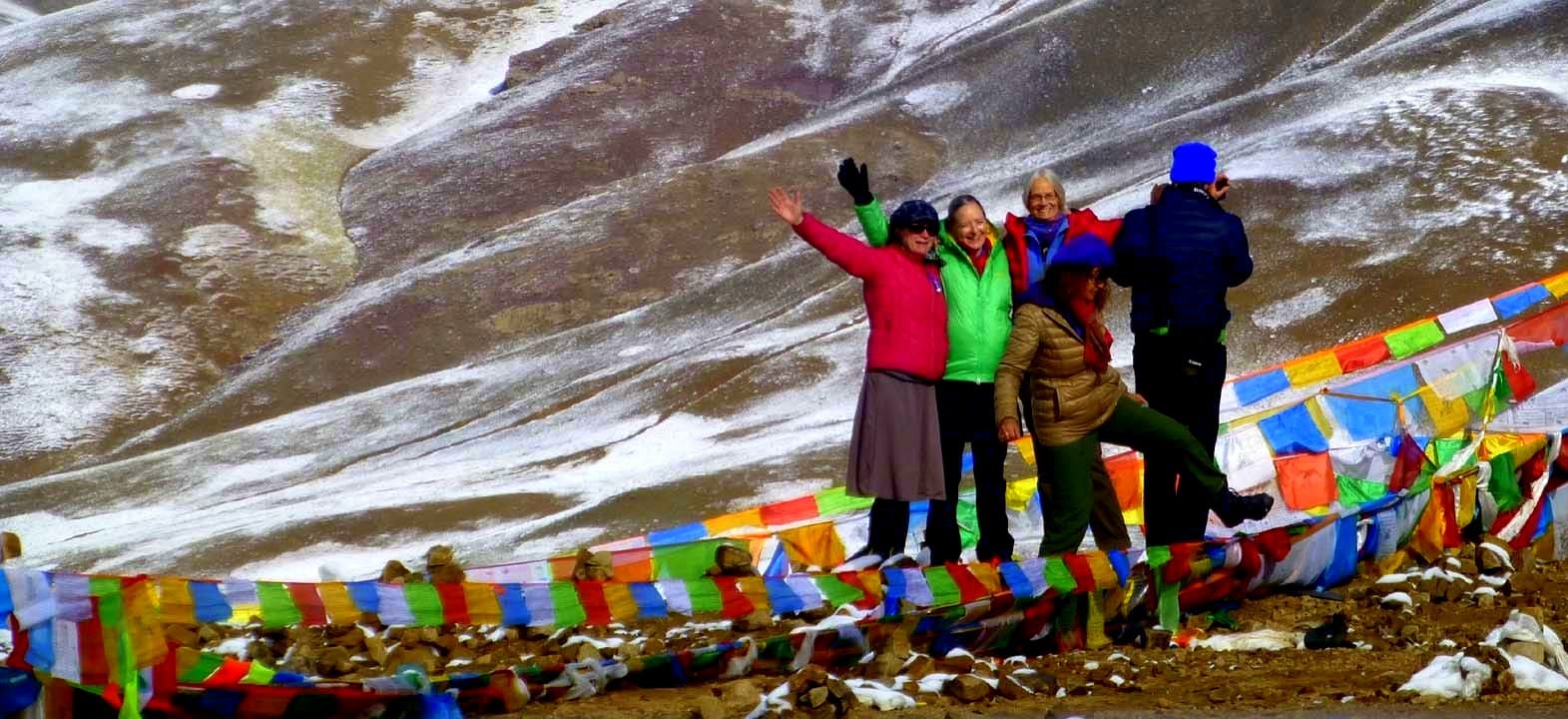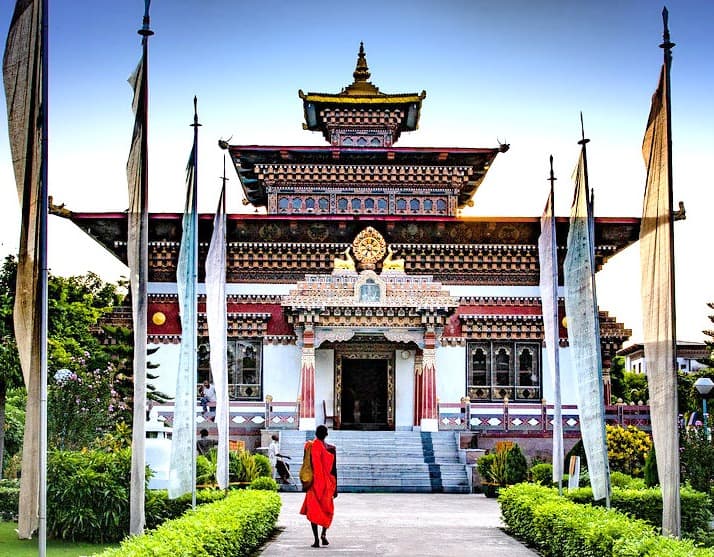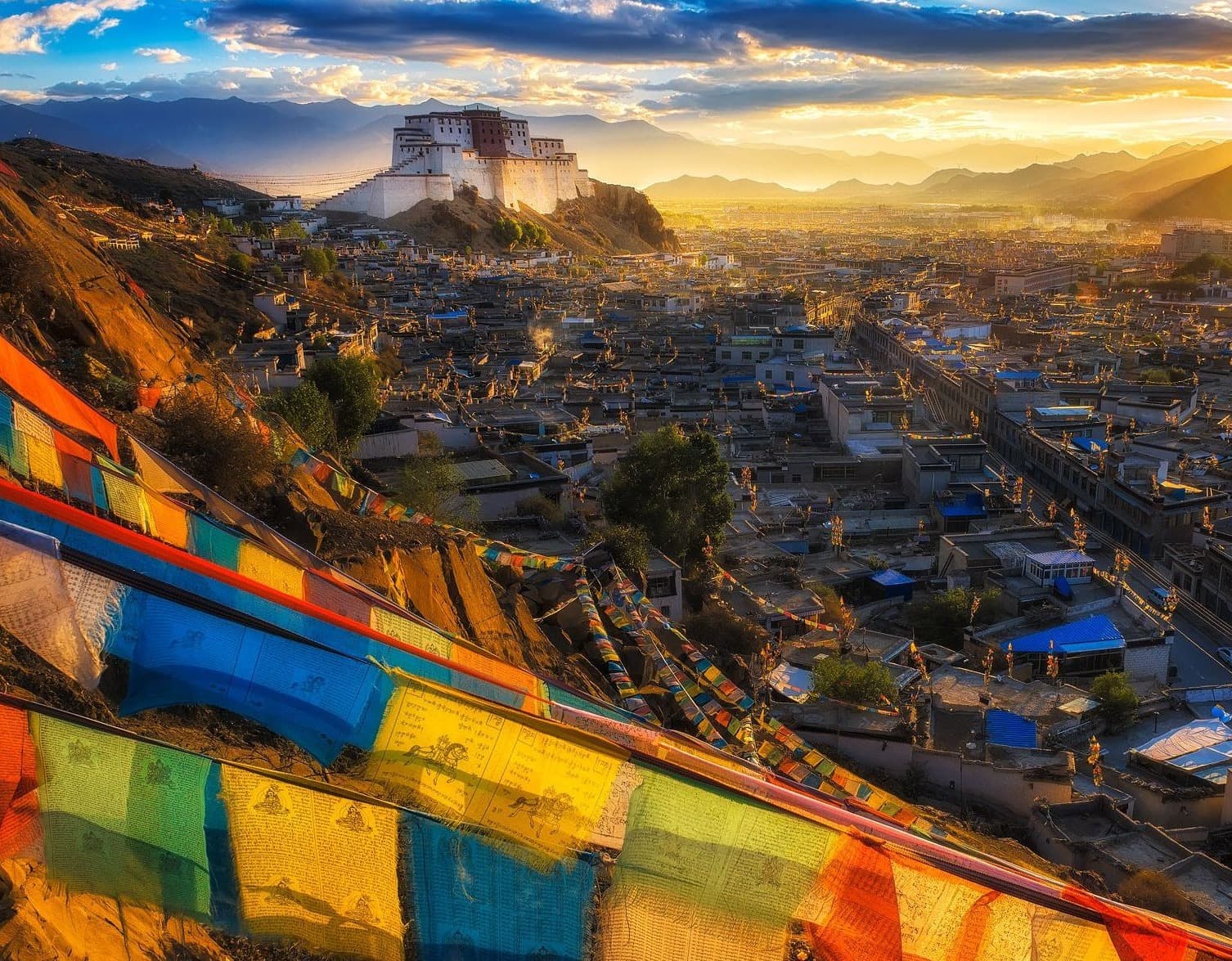Discover the 7 Best Treks in Tibet, offering a perfect blend of breathtaking landscapes, rich cultural heritage, and spiritual experiences. From the Mount Kailash Kora trek and the Everest Base Camp Tibet trek to the serene Namtso Lake trek and the culturally rich Ganden to Samye trek, Tibet provides diverse trekking routes for every adventurer. Explore the Shalu to Nartang trek, the Tsurphu to Yangpachen trek, and the remote Kharta Valley trek to witness the region's unparalleled beauty. With a comprehensive Tibet trekking guide, navigate the challenges of high-altitude trekking Tibet and immerse yourself in sacred treks, cultural treks, and nomadic trekking routes in Tibet. Ensure your journey is seamless with the necessary trekking permits for Tibet and expert local guides. Plan your adventure during the best time for trekking in Tibet and embark on an unforgettable Tibetan trekking tour.
At Druk Holidays, we pride ourselves on being the best company for the 7 Best Treks in Tibet, offering a perfect blend of breathtaking landscapes, rich cultural heritage, and spiritual experiences. From the Mount Kailash Kora trek and the Everest Base Camp Tibet trek to the serene Namtso Lake trek and the culturally rich Ganden to Samye trek, Tibet provides diverse trekking routes for every adventurer. Explore the Shalu to Nartang trek, the Tsurphu to Yangpachen trek, and the remote Kharta Valley trek to witness the region's unparalleled beauty. With our comprehensive Tibet trekking guide, you'll navigate the challenges of high-altitude trekking Tibet and immerse yourself in sacred treks, cultural treks, and nomadic trekking routes in Tibet. Ensure your journey is seamless with the necessary trekking permits for Tibet and our expert local guides. Plan your adventure during the best time for trekking in Tibet and embark on an unforgettable Tibetan trekking tour with Druk Holidays.
Mount Kailash Kora Trek
The Mount Kailash Kora Trek is one of the most revered and spiritually significant treks in Tibet, offering an unparalleled blend of natural beauty and deep religious importance. This journey around Mount Kailash, a peak sacred to Hindus, Buddhists, Jains, and Bon followers, promises an unforgettable experience.
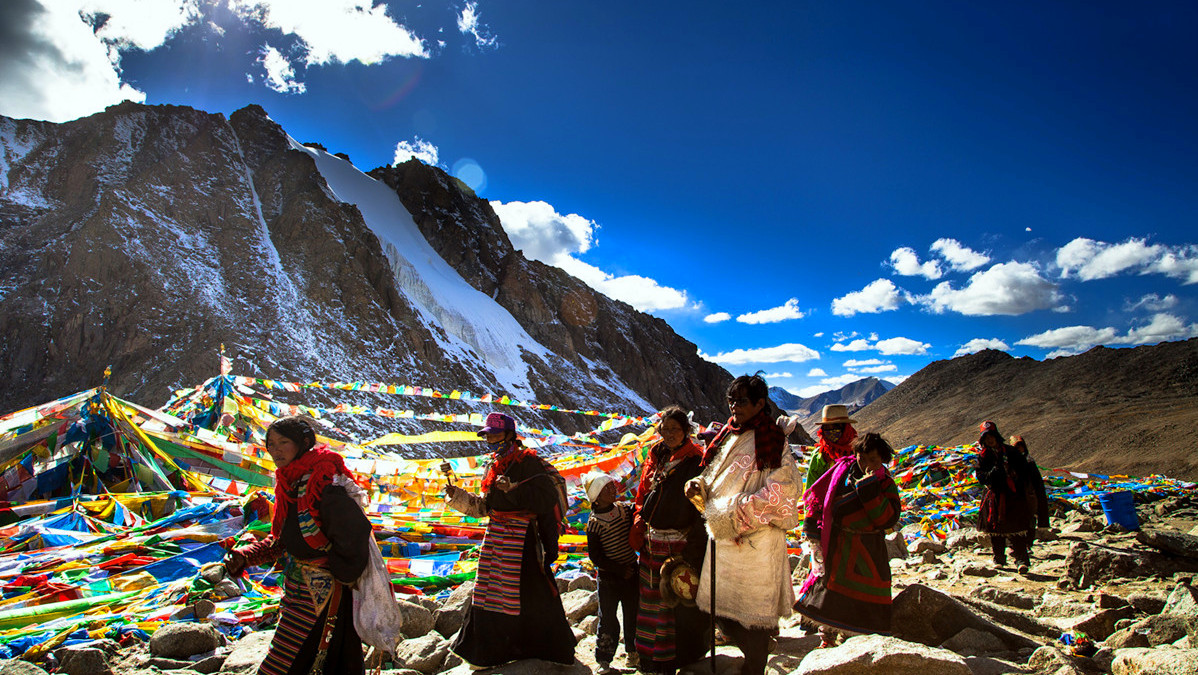
- Spiritual Significance: The trek is a pilgrimage circuit around the sacred Mount Kailash, considered the center of the universe in Hindu, Buddhist, Jain, and Bon traditions. Completing the kora (circumambulation) is believed to bring immense spiritual benefits.
- Stunning Scenery: The trek offers breathtaking views of Mount Kailash, standing majestically at 6,638 meters. The surrounding landscapes include rugged valleys, serene lakes, and snow-capped peaks.
- Cultural Encounters: Trek alongside pilgrims from various cultural backgrounds, each with their unique customs and traditions. This provides a rich cultural experience and a sense of shared devotion.
- Challenging Terrain: The trek covers approximately 52 kilometers, crossing the high-altitude Dolma La Pass at 5,636 meters. The path is a mix of rocky trails, steep ascents, and descents, making it both physically and mentally challenging.
- Historic Monasteries: Visit significant sites such as the Chuku Monastery and the Drirapuk Monastery, which offer insights into Tibetan Buddhism and provide resting points along the trek.
- Natural Wonders: Witness the striking beauty of Lake Manasarovar and the mystical Gauri Kund, both of which hold immense spiritual significance and offer stunning photo opportunities.
The Mount Kailash Kora Trek to experience one of the world's most sacred and awe-inspiring journeys, combining physical challenge with spiritual enlightenment.
Everest Base Camp Tibet Trek
The Everest Base Camp Tibet Trek offers an extraordinary adventure to one of the most iconic destinations on earth. This trek provides unparalleled views of Mount Everest from the northern side, combined with an immersive cultural experience in the remote and enchanting landscapes of Tibet.

- Iconic Views: Witness the breathtaking vistas of Mount Everest, the world's highest peak, from the northern base camp. The panoramic views from this vantage point are simply awe-inspiring and provide a unique perspective on this majestic mountain.
- Historic Monasteries: Visit the Rongbuk Monastery, the highest monastery in the world, located at an altitude of 4,980 meters. This historic site offers spiritual solace and stunning views of Everest, making it a key highlight of the trek.
- Remote Villages: Experience traditional Tibetan life as you pass through remote mountain villages. The local culture, architecture, and hospitality provide a deep connection to the region's heritage.
- Cultural Encounters: Interact with Tibetan monks and villagers, gaining insights into their way of life, customs, and spiritual practices. These encounters enrich the trekking experience, offering a blend of adventure and cultural immersion.
- High Altitude Challenge: The trek involves navigating high-altitude terrain, providing an exciting challenge for trekkers. The journey to Everest Base Camp tests your endurance and rewards you with unmatched natural beauty.
- Pristine Landscapes: Trek through diverse landscapes, including rugged valleys, glacial rivers, and high-altitude deserts. The stark beauty of the Tibetan Plateau, with its vast open spaces and towering peaks, creates a sense of awe and wonder.
- Base Camp Experience: Standing at the northern base camp of Mount Everest is an unforgettable experience. The sense of achievement and the panoramic views of the surrounding peaks make this a bucket-list trek for adventure enthusiasts.
- Wildlife Sightings: Keep an eye out for unique wildlife, such as Tibetan antelopes, yaks, and various bird species. The region's biodiversity adds another layer of interest to the trek.
- Spiritual Atmosphere: The serene and spiritual atmosphere of the Everest region in Tibet offers a tranquil backdrop to the trek. The presence of ancient monasteries and prayer flags fluttering in the wind adds to the mystical allure of the journey.
The Everest Base Camp Tibet Trek to experience an adventure of a lifetime, combining the thrill of high-altitude trekking with the rich cultural and spiritual heritage of Tibet. This trek promises not only spectacular views of Mount Everest but also a profound connection to the heart of the Tibetan Plateau.
Ganden to Samye Trek
The Ganden to Samye Trek is one of the most beautiful and culturally enriching treks in Tibet. This classic route connects two of Tibet's most significant monasteries, offering trekkers a unique blend of natural beauty, spiritual heritage, and traditional Tibetan culture.
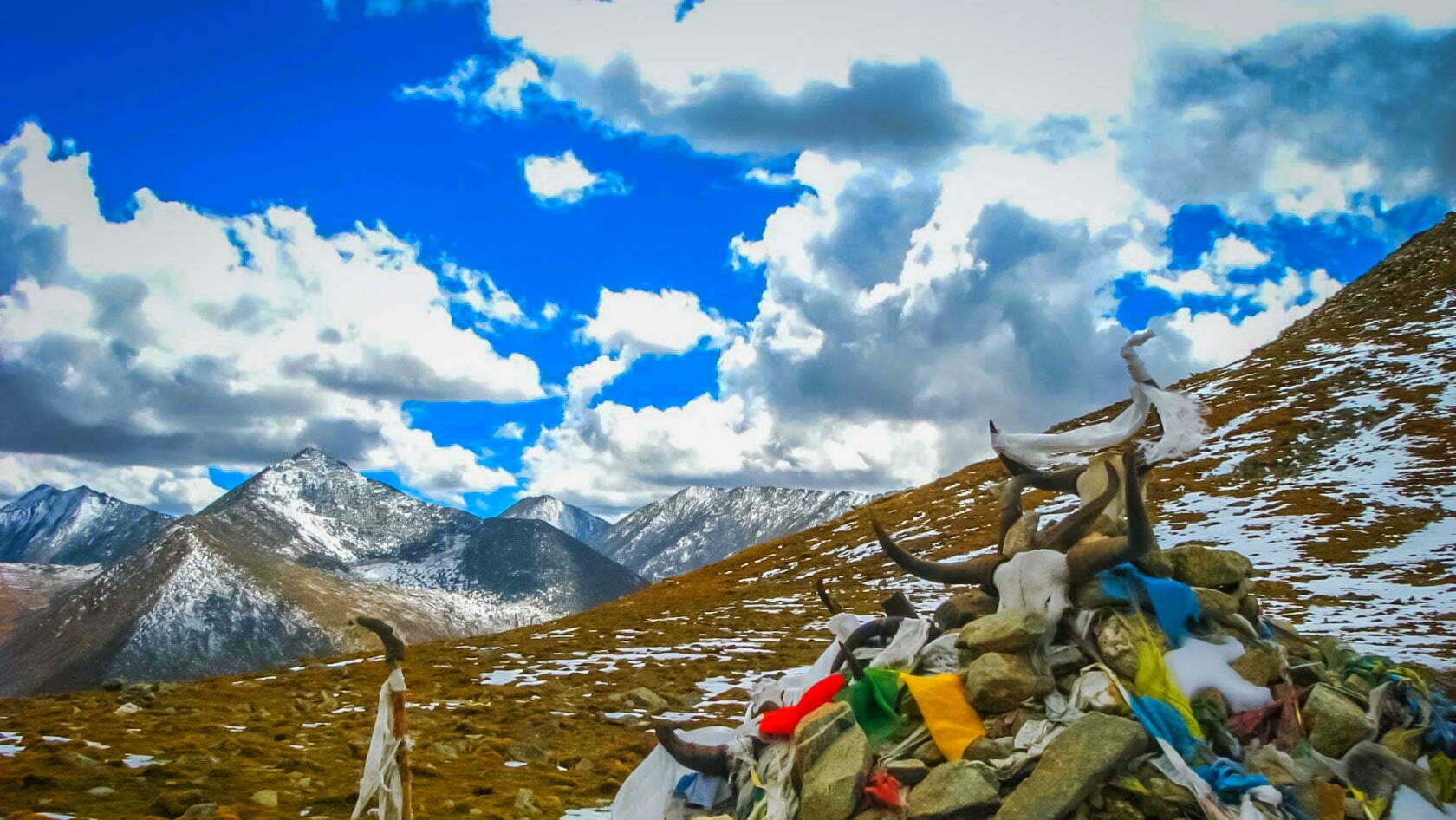
- Monastic Culture: The trek begins at Ganden Monastery, founded in 1409 by Je Tsongkhapa, the founder of the Gelugpa school of Tibetan Buddhism, and ends at Samye Monastery, the first Buddhist monastery built in Tibet. These sites offer deep insights into Tibetan monastic life and Buddhism's history in the region.
- Scenic Passes: Traverse high mountain passes such as the Shugu La (5,250 meters) and Chitu La (5,210 meters), which provide spectacular panoramic views of the surrounding landscapes. These passes challenge trekkers with their altitude and rugged terrain.
- Lush Valleys: Descend into verdant valleys filled with wildflowers, meandering streams, and lush meadows. These serene landscapes contrast beautifully with the high-altitude passes.
- Remote Villages: Experience traditional Tibetan culture in remote villages along the trek. Interact with locals, learn about their way of life, and enjoy the hospitality of Tibetan nomads.
- Cultural Immersion: The trek offers numerous opportunities to immerse yourself in Tibetan culture. Visit ancient hermitages, prayer flag-covered hills, and sacred sites along the route.
- Diverse Terrain: The route encompasses a variety of terrains, from high-altitude alpine landscapes to lowland forests and fields. This diversity makes the trek both challenging and visually rewarding.
- Sacred Sites: Along the way, you'll encounter several sacred sites, including meditation caves and religious shrines, adding a spiritual dimension to your journey.
- Breathtaking Views: Enjoy stunning vistas of the Tibetan Plateau, with its snow-capped peaks, rolling hills, and expansive plains. The natural beauty of the region is a constant companion throughout the trek.
- Historical Significance: The trek follows an ancient pilgrimage route that has been used for centuries by monks and laypeople alike. Walking this path connects you to a long tradition of spiritual journeying.
The Ganden to Samye Trek to experience one of the most enriching and picturesque trekking routes in Tibet. This trek promises a unique combination of spiritual fulfillment, cultural immersion, and natural beauty, making it an unforgettable adventure.
Namtso Lake Trek
The Namtso Lake Trek is a captivating journey through some of Tibet's most stunning and serene landscapes. Namtso, one of the three sacred lakes in Tibet, offers trekkers a unique combination of natural beauty, spiritual significance, and cultural encounters.
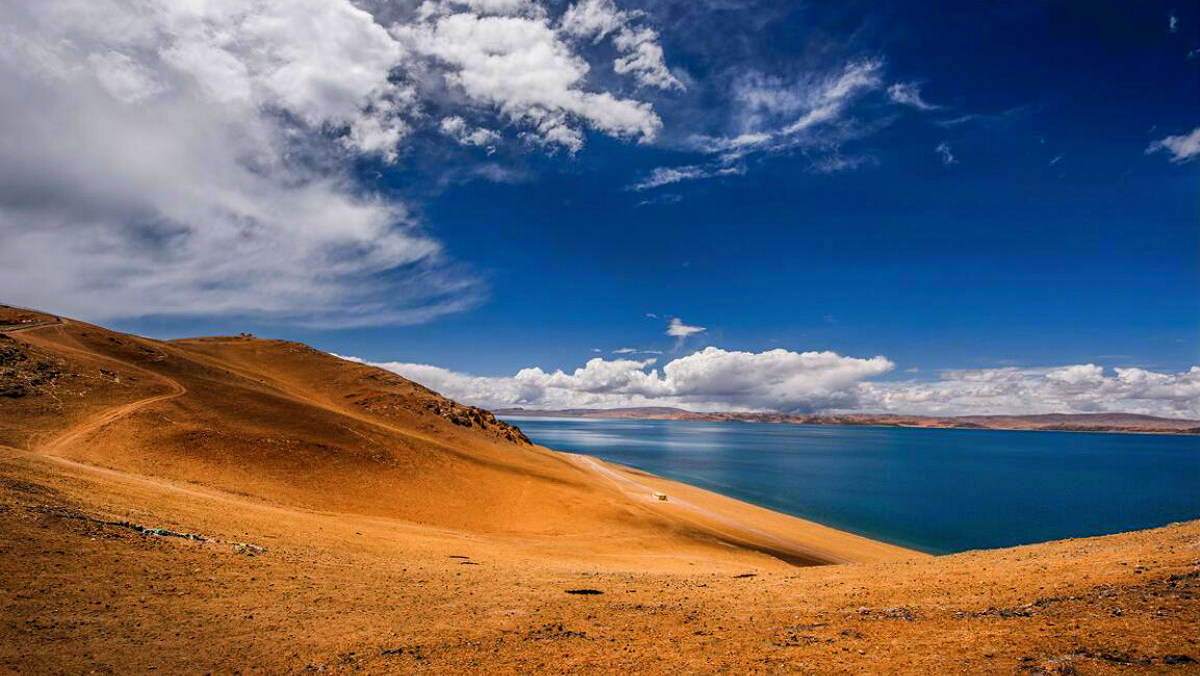
- Sacred Lake: Namtso Lake, known as the "Heavenly Lake," is one of the most sacred lakes in Tibet. Its crystal-clear turquoise waters and surrounding snow-capped peaks create a breathtaking panorama.
- Pristine Nature: Trekking around Namtso Lake provides an opportunity to immerse yourself in pristine natural beauty. The serene environment, with its vast open spaces and striking landscapes, offers a sense of peace and tranquility.
- Nomadic Camps: Encounter traditional Tibetan nomadic herders who graze their yaks and sheep in the area. Learn about their way of life and enjoy their warm hospitality, adding a cultural dimension to your trek.
- Wildlife Sightings: The region is home to a variety of wildlife, including migratory birds, Tibetan antelopes, and yaks. Birdwatchers will particularly enjoy the sight of numerous species near the lake.
- High-altitude Trekking: At an elevation of 4,718 meters, Namtso Lake offers a challenging high-altitude trekking experience. The trek requires physical endurance and acclimatization, making it a rewarding adventure for experienced trekkers.
- Stunning Sunrises and Sunsets: Witness some of the most beautiful sunrises and sunsets over the lake. The changing colors of the water and sky create a mesmerizing spectacle, perfect for photography enthusiasts.
- Spiritual Atmosphere: The lake's spiritual significance adds a mystical aura to the trek. Pilgrims often circumambulate the lake, and you'll encounter numerous prayer flags, shrines, and meditation caves along the way.
- Diverse Terrain: The trek features a variety of terrains, from rocky shores and sandy beaches to grassy plains and high mountain passes. This diversity keeps the trek engaging and visually stunning.
- Panoramic Views: Enjoy panoramic views of the Nyenchen Tanglha mountain range, with its towering peaks and glaciers. The contrasting scenery of the mountains and the lake is truly awe-inspiring.
- Remote Experience: The Namtso Lake Trek offers a remote and off-the-beaten-path experience, allowing you to disconnect from the modern world and connect with nature and spirituality.
The Namtso Lake Trek to experience the perfect blend of natural splendor, cultural encounters, and spiritual enrichment. This trek promises an unforgettable adventure in one of Tibet's most serene and picturesque regions.
Shalu to Nartang Trek
The Shalu to Nartang Trek is a shorter but culturally rich trek in Tibet that offers a unique blend of historical significance, diverse landscapes, and traditional Tibetan culture. This trek connects two of the region's most important monasteries, Shalu and Nartang, providing a deep dive into the spiritual heritage of Tibet.
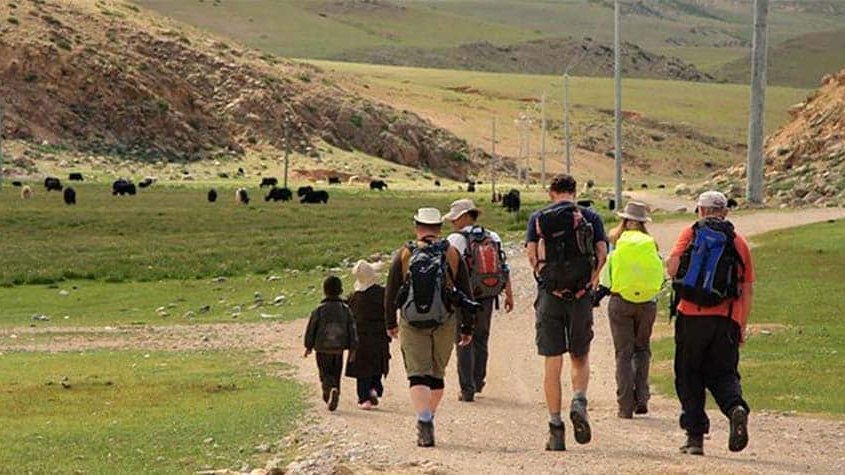
- Historical Monasteries: The trek starts at Shalu Monastery, which dates back to the 11th century and is known for its unique blend of Han and Tibetan architecture. It ends at Nartang Monastery, founded in the 12th century and famous for its vast collection of Buddhist scriptures.
- Cultural Exploration: This trek offers rich cultural experiences as you pass through traditional Tibetan villages. Engage with local villagers, observe their daily lives, and learn about their customs and traditions.
- Diverse Terrain: The route traverses a variety of terrains, from arid valleys and fertile fields to picturesque villages and rugged hills. This diversity makes the trek visually engaging and varied.
- Moderate Challenge: The Shalu to Nartang Trek is relatively short and less physically demanding compared to other high-altitude treks in Tibet. It's ideal for those looking for a cultural trekking experience without the extreme physical exertion.
- Scenic Beauty: Enjoy the serene beauty of the Tibetan landscape, with its rolling hills, clear streams, and expansive fields. The trek offers numerous photo opportunities with its scenic vistas.
- Sacred Sites: Along the route, you will encounter several sacred sites, including ancient stupas, prayer wheels, and meditation caves. These add a spiritual dimension to your journey.
- Remote Villages: Experience the charm of remote Tibetan villages that have remained largely unchanged for centuries. The traditional Tibetan lifestyle and hospitality of the locals make this trek a culturally immersive experience.
- Monastic Life: Gain insights into monastic life by visiting the monasteries at the start and end of the trek. Observe the monks' daily rituals and learn about their spiritual practices and way of life.
- Flora and Fauna: The trek provides an opportunity to see various local flora and fauna, adding to the natural appeal of the journey. The region's biodiversity is a treat for nature enthusiasts.
- Short and Enriching: The Shalu to Nartang Trek is a perfect option for those with limited time who still wish to experience the spiritual and cultural richness of Tibet.
The Shalu to Nartang Trek to experience a journey that offers a perfect blend of cultural immersion, historical significance, and natural beauty. This trek provides a unique opportunity to connect with the spiritual heart of Tibet while exploring its stunning landscapes.
Tsurphu to Yangpachen Trek
The Tsurphu to Yangpachen Trek is a fascinating journey through the heart of Tibet, combining spiritual heritage, stunning landscapes, and a unique cultural experience. This trek, starting at the Tsurphu Monastery and ending at the Yangpachen Hot Springs, offers trekkers a rare opportunity to explore the diverse beauty and deep spiritual significance of the region.
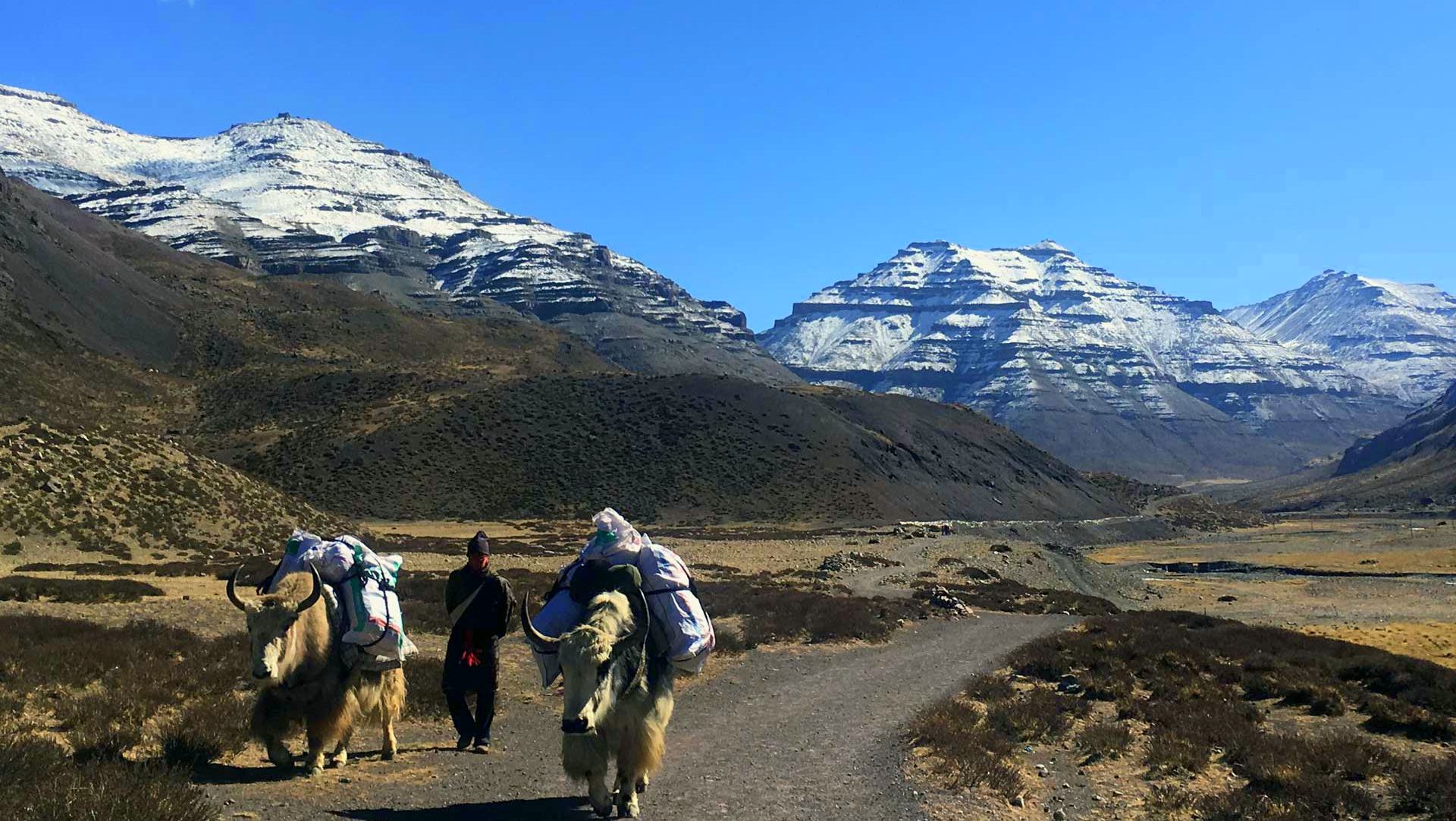
- Spiritual Journey: The trek begins at Tsurphu Monastery, the seat of the Karmapa lineage of Tibetan Buddhism. This historic monastery, located at an altitude of 4,300 meters, provides a serene and spiritually enriching start to the trek.
- Therapeutic Hot Springs: The trek culminates at the Yangpachen Hot Springs, where you can relax and rejuvenate in the naturally heated waters. The hot springs are renowned for their therapeutic properties and offer a perfect end to the trekking adventure.
- High Mountain Passes: The trek involves crossing high-altitude passes such as the Lasar La Pass at 5,300 meters. These passes offer breathtaking panoramic views of the surrounding landscapes and challenge trekkers with their altitude and rugged terrain.
- Nomadic Culture: Walk through areas populated by Tibetan nomads and experience their traditional lifestyle. Encounter nomadic camps and learn about their way of life, adding a rich cultural dimension to your trek.
- Diverse Landscapes: The trek takes you through a variety of landscapes, including high-altitude valleys, alpine meadows, and rocky terrains. This diversity makes the trek visually stunning and engaging.
- Wildlife Sightings: The region is home to various wildlife, including Tibetan antelopes, yaks, and numerous bird species. Keep an eye out for these animals as you trek through their natural habitat.
- Sacred Sites: Along the way, you'll encounter sacred sites such as meditation caves, prayer flags, and ancient stupas. These sites add a spiritual depth to your journey and connect you to the region's rich religious heritage.
- Cultural Encounters: Interact with local villagers and monks, gaining insights into their customs, traditions, and spiritual practices. These cultural encounters enrich the trekking experience and provide a deeper understanding of Tibetan life.
- Stunning Scenery: Enjoy breathtaking views of the Nyenchen Tanglha mountain range, with its snow-capped peaks and glaciers. The contrasting scenery of the mountains and the valleys is truly awe-inspiring.
- Remote and Tranquil: The Tsurphu to Yangpachen Trek offers a remote and tranquil experience, allowing you to disconnect from the modern world and immerse yourself in the natural and spiritual beauty of Tibet.
The Tsurphu to Yangpachen Trek to experience a journey that offers a perfect blend of spiritual enrichment, cultural immersion, and natural beauty. This trek promises an unforgettable adventure in one of Tibet's most remote and picturesque regions.
Kharta Valley Trek
The Kharta Valley Trek is an exhilarating adventure through one of the most remote and stunning regions of Tibet. Known for its spectacular landscapes, diverse terrains, and proximity to Mount Everest's eastern face, this trek offers a unique combination of natural beauty and cultural immersion.
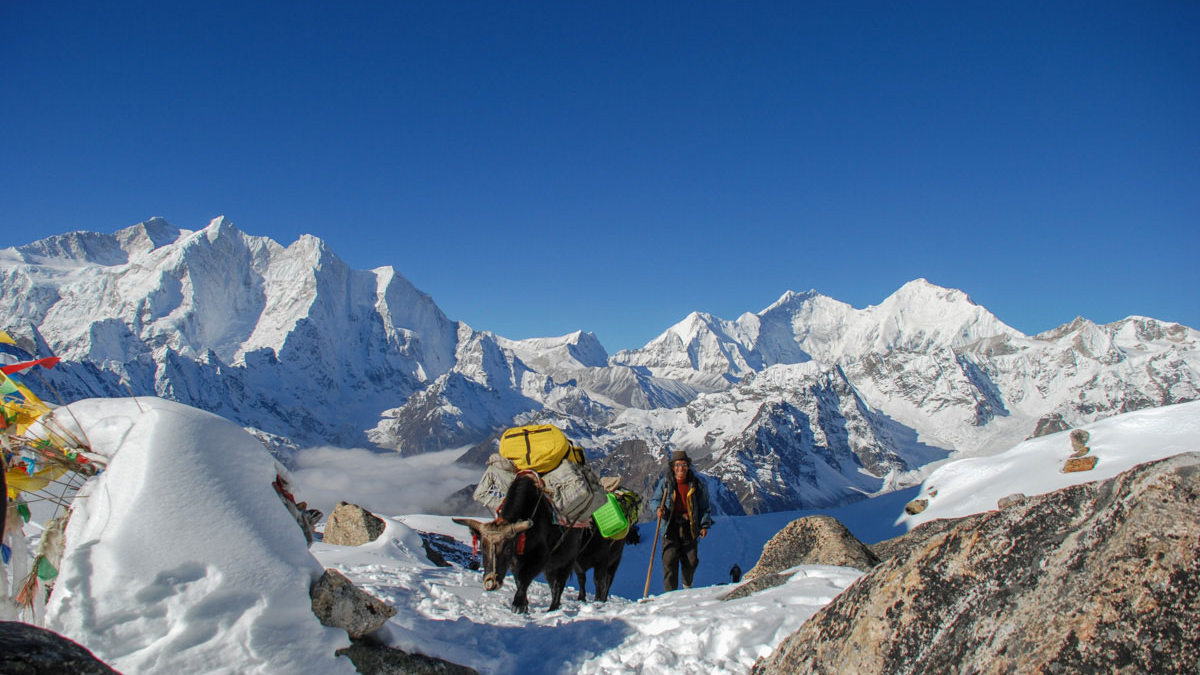
- Spectacular Views of Everest: The trek provides some of the most breathtaking views of the east face of Mount Everest, including the dramatic Kangshung Face, which is one of the most remote and least visited parts of the mountain.
- Diverse Landscapes: Trek through a variety of landscapes, including lush green valleys, high-altitude meadows, glacial lakes, and rugged mountain passes. The diversity of the terrain keeps the trek visually engaging and challenging.
- High Passes: Cross several high mountain passes, such as the Shao La Pass (4,970 meters) and Langma La Pass (5,320 meters). These passes offer panoramic views of the Himalayan range and require physical endurance and acclimatization.
- Cultural Encounters: Experience traditional Tibetan culture by passing through remote villages and nomadic camps. Interact with local villagers and nomads, learning about their way of life and customs.
- Remote Wilderness: The Kharta Valley Trek is one of the most remote treks in Tibet, offering a true wilderness experience. The solitude and tranquility of the region allow trekkers to connect deeply with nature.
- Glacial Lakes and Rivers: Discover pristine glacial lakes, such as Karma Tsangpo and Pethang Ringmo, and trek alongside rushing rivers fed by the melting glaciers. These natural features add to the trek's scenic beauty.
- Flora and Fauna: The trek is home to a rich variety of flora and fauna, including wildflowers, rhododendron forests, and rare wildlife species like blue sheep and Himalayan marmots. Birdwatchers will also enjoy spotting various bird species.
- Challenging Terrain: The trek involves challenging terrains, including steep ascents and descents, making it suitable for experienced trekkers seeking an adventurous and physically demanding journey.
- Spiritual Sites: Encounter sacred sites along the way, such as ancient prayer flags, chortens, and meditation caves. These sites add a spiritual dimension to the trek and connect you to the region's rich religious heritage.
- Unparalleled Scenery: The trek offers some of the most stunning scenery in the Himalayas, with towering peaks, deep valleys, and expansive plateaus providing a dramatic and ever-changing backdrop.
The Kharta Valley Trek to experience one of the most remote and awe-inspiring trekking routes in Tibet. This trek promises an unforgettable adventure, combining challenging high-altitude trekking with the unparalleled beauty and cultural richness of the Kharta Valley region.
Best Time to Trek in Tibet
The best time to trek in Tibet is during the spring and autumn seasons, specifically from late April to June and from September to early October. These periods offer favorable weather conditions, clear skies, and optimal visibility, making for a comfortable and enjoyable trekking experience.
- Weather Conditions: During late spring (April to June) and early autumn (September to October), Tibet experiences mild temperatures, making it ideal for trekking. The weather is generally stable with minimal rainfall.
- Visibility: These seasons provide clear skies, offering stunning views of the Himalayan peaks and the surrounding landscapes. This is particularly important for treks such as the Everest Base Camp Tibet Trek and the Kharta Valley Trek, where breathtaking vistas are a major highlight.
- Flora and Fauna: Spring and autumn are also great times to witness the region's unique flora and fauna. In spring, wildflowers bloom across the valleys, adding vibrant colors to the landscape. Autumn offers golden hues and a chance to see wildlife preparing for winter.
- Cultural Festivals: Spring and autumn coincide with several important Tibetan festivals, providing a richer cultural experience. Participating in local festivals can enhance your trekking journey by offering deeper insights into Tibetan traditions and customs.
- Crowd Levels: These seasons are popular for trekking, yet they are not as crowded as the peak tourist months. This balance ensures you can enjoy the trails without the overwhelming presence of other trekkers.
Begin your trek during these optimal seasons to fully enjoy the natural beauty, cultural richness, and spiritual depth that Tibet has to offer.
Preparation and Tips for Trekking in Tibet
Embarking on a trek in Tibet requires careful preparation to ensure a safe and enjoyable experience. Here are some essential tips to help you get ready for your adventure:
Acclimatization
- Spend Time at High Altitude: Before starting your trek, spend a few days acclimatizing in high-altitude areas like Lhasa. This helps your body adjust to the lower oxygen levels and reduces the risk of altitude sickness.
- Gradual Ascent: Choose trekking routes that allow for a gradual increase in altitude. Avoid rapid ascents to minimize the risk of altitude sickness.
Physical Fitness
- Cardio Training: Engage in regular cardio exercises such as running, cycling, or swimming to build stamina and cardiovascular strength.
- Strength Training: Incorporate strength training exercises to build muscle strength, particularly in your legs and core.
- Hiking Practice: Go on practice hikes with a loaded backpack to simulate trekking conditions and build endurance.
Permits and Documentation
- Trekking Permits: Ensure you have all necessary permits for trekking in Tibet, including the Tibet Travel Permit and the Alien Travel Permit.
- Passport and Visas: Make sure your passport is valid and obtain the necessary visas for entering China and Tibet.
Packing Essentials
- Clothing: Pack layers of clothing to adapt to varying temperatures. Include thermal wear, moisture-wicking base layers, a fleece jacket, a waterproof and windproof outer layer, and a down jacket for cold nights.
- Footwear: Invest in high-quality trekking boots that are well broken in to avoid blisters. Bring comfortable socks and gaiters for additional protection.
- Sleeping Gear: A good sleeping bag rated for low temperatures and a lightweight sleeping mat are essential for a comfortable night's rest.
- Backpack: Use a sturdy and comfortable backpack with a capacity of 50-70 liters. Ensure it has a rain cover and is properly fitted to your body.
Health and Safety
- First-Aid Kit: Pack a comprehensive first-aid kit including bandages, antiseptic wipes, pain relievers, blister treatment, and any personal medications.
- Hydration: Bring a hydration system or water bottles and water purification tablets or filters to ensure a safe drinking water supply.
- Sun Protection: Pack sunscreen, sunglasses, and a wide-brimmed hat to protect against the strong sun at high altitudes.
Food and Nutrition
- High-Energy Snacks: Carry high-energy snacks like nuts, dried fruits, energy bars, and chocolate to keep your energy levels up during the trek.
- Meals: Plan for meals that are easy to prepare and nutritious. Dehydrated meals, instant noodles, and oatmeal are good options.
Guides and Support
- Local Guides: Hiring a knowledgeable Tibet trekking guide enhances your experience, provides cultural insights, and ensures your safety on the trails.
- Porters: Consider hiring porters to carry heavy loads, allowing you to focus on the trekking experience without being weighed down.
Weather Awareness
- Weather Forecasts: Keep an eye on weather forecasts and be prepared for sudden changes in weather conditions.
- Emergency Plan: Have an emergency plan in place, including contact information for local authorities and a basic understanding of evacuation procedures.
Cultural Respect
- Local Customs: Familiarize yourself with local customs and etiquette to show respect to the Tibetan people and their culture.
- Environmental Responsibility: Follow Leave No Trace principles to minimize your impact on the environment. Dispose of waste properly and respect wildlife.
By following these preparation tips, you can ensure a safe, enjoyable, and enriching trekking experience in Tibet, allowing you to fully appreciate the region's natural beauty and cultural heritage.
The 7 Best Treks in Tibet offer a unique blend of natural beauty, spiritual depth, and cultural richness, making Tibet a premier destination for trekking enthusiasts. From the sacred Mount Kailash Kora Trek and the challenging Everest Base Camp Tibet Trek to the serene Namtso Lake Trek and the remote Kharta Valley Trek, each trek provides a distinct adventure. These treks immerse you in Tibetan monastic life, stunning landscapes, and traditional lifestyles, offering profound connections with nature and culture. With careful preparation and the best trekking seasons from late April to June and September to early October, these top treks in Tibet promise an unforgettable and transformative experience.

